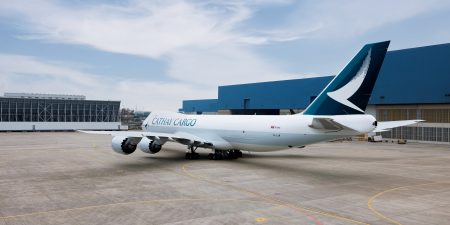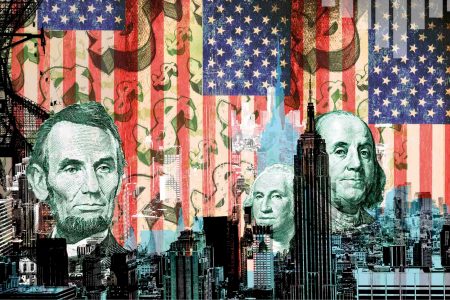Anyone reading the financial pages or listening to the rhetoric preceding the presidential election could be forgiven for fearing for the US economy and its trade prospects in particular. The outlook is not ideal, but nor is it necessarily as dark as has been painted. Now the election is over and President-elect Trump is assessing which of his crowd-pleasing policies to enact, it’s a good time to look at some of the underlying fundamentals.
In October, while some of the US’s 15 free trade agreements signed since 1985 were being maligned by the presidential hopefuls, the International Monetary Fund (IMF) downgraded its 2016 growth forecast for the US to a meagre 1.6 per cent. Its chief economist sounded gloomy. ‘Growth has been too low for too long and in many countries its benefits have reached too few,’ Maurice Obstfeld told the Financial Times.
In the same month, the US Department of Commerce announced that the goods and services trade deficit had reached $40.7 billion in August, an increase of $1.2 billion on July. By the end of the year, the US Federal Budget deficit is expected to be $616 billion while the overall national debt is forecast to exceed an eye-watering $19.4 trillion.
Writing in Forbes this year, economic analyst, Mike Patton said: ‘At some point, it will become unsustainable and the entire system will collapse like a house of cards.’
He is but one voice in a growing chorus forecasting economic gloom for the US.
Stability has been buffeted by the uncertainty ahead of the US Presidential election, the potential global shock of Brexit, exploding corporate debt bubbles and depressed commodity prices. It was therefore not surprising that the Federal Reserve declined to increase interest rates in September, citing low growth and low inflation expectations.
Maybe the director of a major US forwarder was thinking wishfully when he said: ‘Looking at past data, election years tend to suppress the market until people know what’s happening, then it opens up. Hopefully, history repeats itself this year.’
But actually there is some room for cautious optimism. Paul Schulte is founder of Schulte Research, which provides strategic advice to the financial services sector in the US and Hong Kong. He says: ‘The US is in great shape – it has one of the healthiest financial sectors in the world. Cities like New York, Los Angeles and San Francisco, which have innovative high technology and digital industries, are economically on fire.’
While much is made of America’s trade deficit with China and the rest of the world, The Economist pointed out recently that ‘America has run a trade deficit every year since 1976,’ adding that a trading surplus is not some sort of ‘virility symbol’.
And for the air cargo sector, there are some positive notes. ‘Trade is still registering positive growth, albeit at a disappointing rate,’ World Trade Organization (WTO) director-general Roberto Azevêdo said in April this year. This is just being reflected in reports of modest upward trends in global air cargo in the summer.


